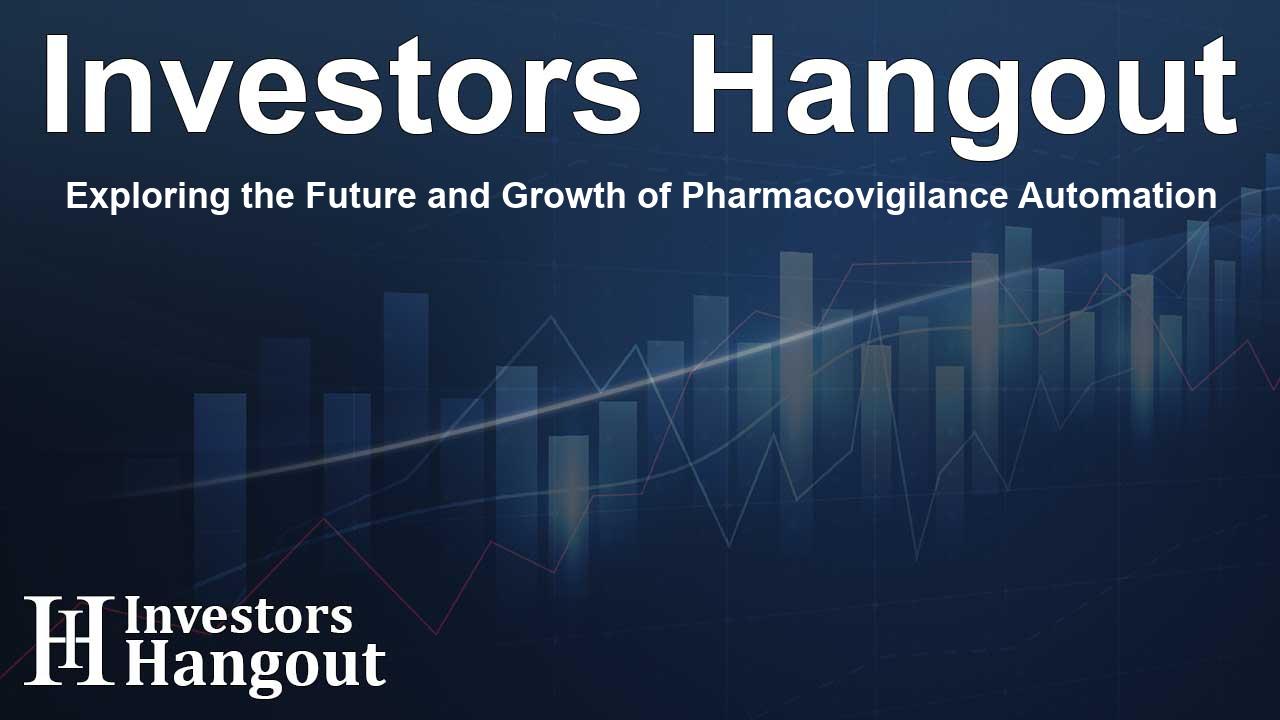Exploring the Future and Growth of Pharmacovigilance Automation

The Growth of the Pharmacovigilance Automation Market
The pharmacovigilance automation market is experiencing a remarkable surge, driven by a plethora of factors including increased investments, relentless innovation, and heightened demand within healthcare and pharmaceutical sectors. This growth has been propelled by a strong focus on safety regulations and the complexity of managing adverse drug reactions.
Driving Forces Behind Market Expansion
One major initiator of this market growth is the tightening of global drug safety regulations. As healthcare providers and regulatory bodies become increasingly demanding, there is an urgent need to enhance the oversight of adverse drug reactions. Organizations have started to harness advanced technologies, such as artificial intelligence (AI), natural language processing (NLP), and machine learning, which are pivotal for automating crucial tasks. These technologies facilitate rapid identification, collection, and analysis of adverse events, resulting in more efficient and cost-effective pharmacovigilance processes.
Technological Innovations in Focus
A pivotal aspect of the industry's evolution is the integration of cutting-edge technologies. AI and machine learning play an essential role in automating various operational tasks, from identifying adverse events to synthesizing data from various unstructured sources like social media and literature. Automation of case processing – such as the intake, triage, and analysis phases – is enabling quicker reporting and improved efficiency.
Regional Market Dynamics
North America remains the frontrunner in the pharmacovigilance automation market, capturing a significant share due to substantial R&D investments by pharmaceutical companies and a solid digital healthcare infrastructure. Concurrently, the Asia Pacific region is swiftly emerging as the fastest-growing area, bolstered by an escalation in clinical trial activity and a robust regulatory landscape advocating better drug safety monitoring.
Market Insights and Functionality
The pharmacovigilance automation market is extensive, with key areas contributing to revenue generation. Notably, the case processing and reporting segment is expected to capture the largest market share, demonstrating its critical role in ensuring drug safety. On the technology front, robotic process automation (RPA) is currently leading, while the NLP segment is anticipated to witness the fastest growth, owing to its capacity for handling vast quantities of data.
Adoption Challenges and Future Outlook
Despite its rapid growth, the industry faces numerous challenges. A fundamental hurdle is the insufficient funding allocated to pharmacovigilance efforts, which limits the deployment of advanced automation solutions. Additionally, the shortage of skilled professionals well-versed in pharmacovigilance remains a significant concern.
However, as the global emphasis on drug safety intensifies and technological innovations continue to proliferate, the long-term outlook for the pharmacovigilance automation market remains promising. Companies aiming to leverage higher levels of automation will not only enhance efficiency but also address public health risks more effectively.
Key Takeaways from the Pharmacovigilance Market Landscape
- North America dominates the market with a significant share, while Asia Pacific is the fastest-growing region.
- AI integration is reshaping the landscape by enhancing operational efficiencies.
- The case processing and reporting segment remains a critical revenue driver.
- Funding and skilled workforce shortages pose challenges to the market's growth potential.
- Technological advancements, particularly in NLP and RPA, are crucial for future developments.
Frequently Asked Questions
What factors are driving the growth of the pharmacovigilance automation market?
The market is driven by increased investments, innovative technologies, and stringent safety regulations related to drug administration and monitoring.
Which technologies are most influential in this market?
Artificial intelligence, natural language processing, and robotic process automation are among the forefront technologies enhancing pharmacovigilance practices.
What are the leading regions in the pharmacovigilance automation market?
North America leads the market, while the Asia Pacific region is noted for its rapid growth and robust regulatory landscape.
What challenges does the industry face?
The industry grapples with funding limitations for pharmacovigilance initiatives and a shortage of trained professionals adept in automation technologies.
What is the future outlook for the pharmacovigilance automation market?
The outlook is positive as technological advancements continue to aid in better drug monitoring, improving patient safety, and addressing regulatory compliance effectively.
About The Author
Contact Kelly Martin privately here. Or send an email with ATTN: Kelly Martin as the subject to contact@investorshangout.com.
About Investors Hangout
Investors Hangout is a leading online stock forum for financial discussion and learning, offering a wide range of free tools and resources. It draws in traders of all levels, who exchange market knowledge, investigate trading tactics, and keep an eye on industry developments in real time. Featuring financial articles, stock message boards, quotes, charts, company profiles, and live news updates. Through cooperative learning and a wealth of informational resources, it helps users from novices creating their first portfolios to experts honing their techniques. Join Investors Hangout today: https://investorshangout.com/
The content of this article is based on factual, publicly available information and does not represent legal, financial, or investment advice. Investors Hangout does not offer financial advice, and the author is not a licensed financial advisor. Consult a qualified advisor before making any financial or investment decisions based on this article. This article should not be considered advice to purchase, sell, or hold any securities or other investments. If any of the material provided here is inaccurate, please contact us for corrections.
